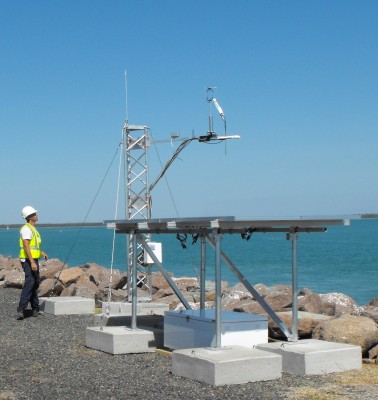Measurements of Total Surface Energy Now Available from Australia
Published: 30 September 2010

The SEBS consists of a precision net radiometer for upwelling and downwelling measurements of solar and infrared radiation; a wetness sensor for dew, frost, rain, and snow; and surface probes for measuring soil moisture, heat flow, and temperature. The new system uses essentially the same equipment and data acquisition equipment as the SGP ECORs, but with a new data logger for the additional radiometer and soil sensors. Data will be collected in the ECOR computer and transmitted to the site data system via a cell phone modem. New infrastructure for mounts, signal towers, and electrical service was completed prior to the installations.
The ECOR/SEBS pairings will operate at locations with differing surface properties—ocean, grassland, and wetland. Acquired through the Recovery Act, the ECOR/SEBS instrument pairings will also be deployed at the ARM site in Barrow, Alaska, and with the second ARM Mobile Facility. The upgrades will be applied to the existing ECOR stations at the SGP site and with the AMF1, currently in the Azores.
The ARM Climate Research Facility is a DOE Office of Science user facility. The ARM Facility is operated by nine DOE national laboratories, including .
Keep up with the Atmospheric Observer
Updates on ARM news, events, and opportunities delivered to your inbox
ARM User Profile
ARM welcomes users from all institutions and nations. A free ARM user account is needed to access ARM data.


















